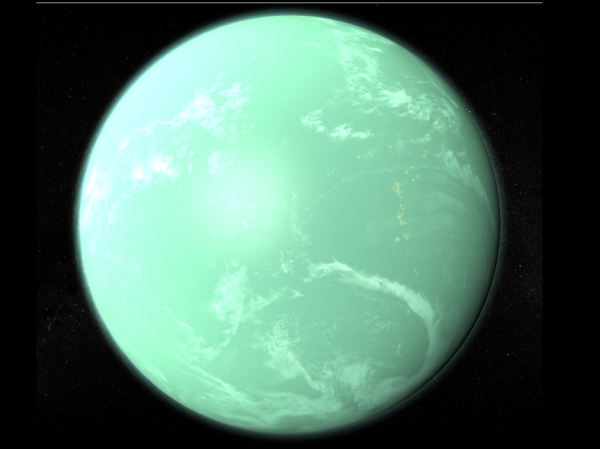BY LETTER
Pyrohydrothalassic subtype
 Image from LordOther | |
| Meggio, a pyrohydrothallassic world in the Vangelis system | |
The water layer may be hundreds of kilometres deep; on many such worlds the water is deep enough to compress the water into high-pressure ice, forming an ice mantle which covers the rocky layers below. The depth at which this ice mantle forms depends on the temperature of the ocean, which depends in turn on the heat received from the local star(s), tidal heating and radioisotope decay in the core.
 Image from LordOther | |
| Kabosu, a green-tinged pyrohydrothallassic world, with a thin acidian haze | |
Protein-based life can only survive on the coolest pyrohydrothalassic worlds; above 200° C any colonsation effort must use artificial life-like processes, often derived from thiogen biochemistry. Due to volcanic activity within the ice mantle layers the oceans of these worlds often contain a rich mix of dissolved ions and gases, and colonies on such worlds generally base their economy on mineral extraction technology.
Venus-like wet-greenhouse worlds with liquid water seas or oceans are known as PelaCytherean Subtype worlds; worlds of this kind which have macroscopic biospheres are given the name To'ul'hian worlds.
Related Articles
Appears in Topics
Development Notes
Text by Steve Bowers
Initially published on 22 February 2012.
2025-05-02 by AstroChara: Reverted to "Pyrohydrothalassic subtype"
Initially published on 22 February 2012.
2025-05-02 by AstroChara: Reverted to "Pyrohydrothalassic subtype"






